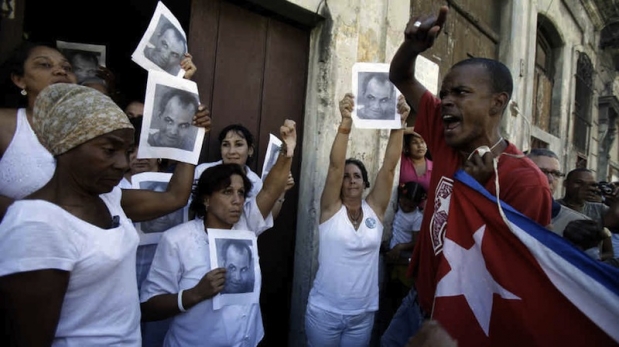
The word esbirro*, to designate someone who committed acts against human dignity, including torture and murder, sheltered by the impunity of service to the Government, began to be used in Cuba during the dictatorship of General Gerardo Machado, back in the 1930s. In the 1950s, during the dictatorship of General Fulgencio Batista, it was taken up again.
Duly constituted authorities are one thing, necessary in any social system to maintain citizen order and peaceful coexistence, acting in accordance with the laws, and it’s another thing to have people (men and women) who, sheltered by that same authorities, commit acts against people, whether physical, moral or psychological.
On coming to power in 1959, it was declared that there would be no more “esbirros,” and that members of the armed bodies would act respectfully towards citizens, as they should. The majority of Cubans applauded this declaration. But with the passage of time, certain words and promises were forgotten: today, the “profession” is one again practiced.
Those who exercise it today employ psychological torture and, often, “going in with hands and feet,” use physical aggression (what are they but the beatings of those who think differently, be they men or women, with contusions, broken heads and arms, loss of teeth, etc?). Not to mention economic harassment, abuse and humiliations. Numerous events, related by the victims themselves, confirm it, as do the numerous images captured by cellphones and put on the web. As you see, we have those who exercise the profession again, although they promised us it wouldn’t happen again.
When a government has to go to these people to instill fear, it shows weakness and the inability to compete in the realm of ideas, although they organize and engage in prolonged “battles” for that purpose. In addition, whomever practices the profession and is used today, will be abandoned to his fate tomorrow, and will have to answer for his acts before the justice of a democratic society. Our history is rich in examples. It’s hard to know if our current “practitioners,” the active esbirros and the esbirros-in-training, have thought about that.
There are “government esbirros,” who are paid monthly salaries for positions in the gang, and the “self-employed esbirros,” who, although not paid salaries, receive certain collateral benefits, such as to not be interfered with if they practice illegal economic activities, protected by the facade of “Revolutionaries,” according to the dogmatic content that the authorities give this word.
These characters, to feel safer, only arrive on the scene by government call, making an appearance at times and places they indicate. They easily stand out as the most “enraged” among the “enraged people,” the official euphemism for the mobs mobilized against those who think differently and act accordingly. Among these “enraged,” their activism and violence are in direct relation to the amount of “dirty laundry” they treasure.
This profession has always been reason for scorn, even by those who use them. It’s a shame to see how young people of both sexes, and people not so young, lend themselves to it, erroneously believing they are carrying out a patriotic task in defense of the nation. Sadly, it’s a mistake that will always weigh on their lives. More than hated, they should be pitied, because what they are doing is mortgaging their own futures as free citizens in a democratic society.
By Fernando Dámaso
*Translator’s note: Esbirro translates variously as goon, thug, henchman.
From Diario de Cuba
19 September 2013
